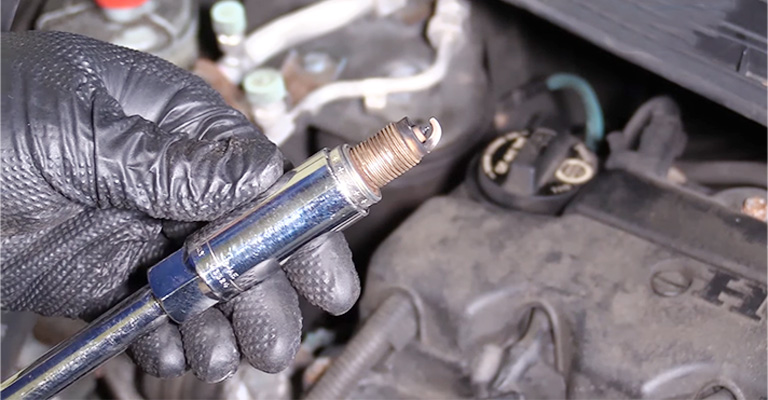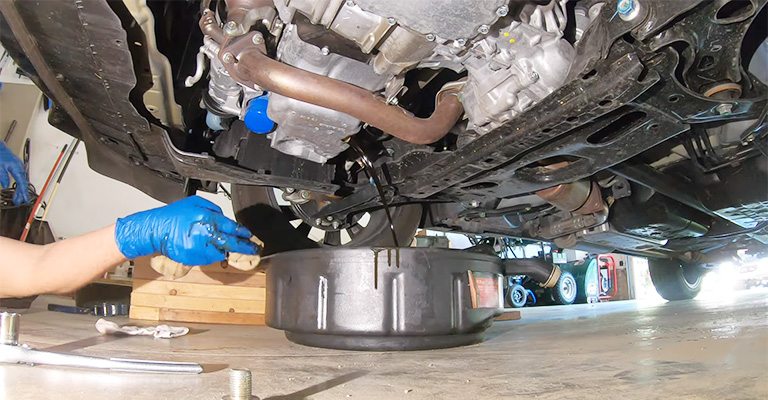The Honda maintenance minder system is a helpful tool designed to keep drivers informed about necessary maintenance tasks for their vehicles.
One of the common codes that may appear on the dashboard is A14, indicating the need to change the oil, rotate the tires, and replace the spark plugs.
In this blog post, we will delve into the details of the A14 code, explore the significance of each maintenance task, and provide step-by-step instructions on how to reset the code.
Let’s unravel the mysteries of the A14 code and ensure your Honda vehicle receives the care it deserves.

Understanding the Honda A14 Maintenance Minder Code
The A14 code that appears on the Honda maintenance minder system serves as a reminder for drivers to perform specific maintenance tasks on their vehicles.
Each digit in the code represents a different task that needs attention. Let’s explore the meaning and significance of the A14 code in detail.
Definition and Significance of the A14 Code
The A14 code breaks down as follows:
A – Oil Change
1 – Tire rotation
4 – Spark plug replacement
It indicates that these three maintenance tasks are due and should be performed to ensure the continued health and performance of your Honda vehicle.
Breakdown of the Individual Tasks:
Oil Change

Regular oil changes are crucial to keep the engine running smoothly. Fresh oil lubricates the engine components, reduces friction, removes contaminants, and helps maintain proper engine temperature.
Neglecting oil changes can lead to decreased fuel efficiency, engine damage, and costly repairs.
Tire Rotation
Tire rotation involves moving the tires to different positions on the vehicle to ensure even wear. This helps extend tire life, improve traction and handling, maintain proper alignment, and maximize fuel efficiency.
Uneven tire wear can cause imbalances and affect the overall performance and safety of your vehicle.
Spark Plug Replacement

Spark plugs play a vital role in igniting the air-fuel mixture in the engine’s combustion chamber. Over time, spark plugs wear out, leading to reduced fuel efficiency, misfires, and engine performance issues.
Regularly replacing spark plugs ensures proper combustion, optimal fuel economy, and overall engine health.
Why Timely Maintenance is Crucial for Optimal Vehicle Performance
Timely maintenance is crucial for several reasons:
Performance and Efficiency
Following the recommended maintenance intervals, as indicated by the A14 code, helps maintain the vehicle’s peak performance and fuel efficiency. Regular oil changes, tire rotations, and spark plug replacements ensure that all systems are functioning optimally.
Preventive Measures

Performing maintenance tasks on time helps prevent potential issues from escalating into major problems. Routine oil changes, for example, prevent excessive engine wear, sludge buildup, and premature engine failure.
Tire rotations help distribute wear evenly, minimizing the risk of tire blowouts and ensuring proper handling.
Longevity and Resale Value
Well-maintained vehicles tend to have a longer lifespan and retain higher resale value. Regular maintenance helps preserve the condition of vital components, reduces the risk of breakdowns, and demonstrates responsible vehicle ownership.
Warranty Requirements
Following the recommended maintenance schedule is often a requirement to maintain the warranty coverage on your Honda vehicle.
Neglecting scheduled maintenance can void the warranty and leave you financially responsible for repairs that could have been covered.
Oil Change: Keeping the Heart of Your Honda Healthy

Regular oil changes are vital for maintaining the health and performance of your Honda vehicle’s engine.
Let’s delve into the importance of oil changes, recommended service intervals, types of oil suitable for Honda vehicles, and the options for getting an oil change.
Importance of Regular Oil Changes
Oil serves as the lifeblood of the engine, lubricating its moving parts and reducing friction. Over time, the oil becomes contaminated with dirt, debris, and combustion byproducts, which can degrade its effectiveness.
Regular oil changes ensure that the engine stays properly lubricated, allowing it to run smoothly and efficiently. Additionally, fresh oil helps dissipate heat, prevents engine wear, and extends the engine’s lifespan.
Recommended Service Interval for Oil Change
For Honda vehicles, the recommended service interval for oil changes is typically around 3,500 miles.
However, it’s important to consult your owner’s manual or maintenance minder system for the specific interval recommended for your vehicle model. Following the manufacturer’s guidelines ensures optimal engine performance and longevity.
Types of Oil and Their Benefits for Honda Vehicles:
Honda vehicles typically require engine oil that meets certain specifications, such as viscosity and performance standards. Common types of engine oil suitable for Honda vehicles include conventional, synthetic blend, and full synthetic oils.
Synthetic oils generally offer better performance and protection, especially under extreme conditions, and can enhance fuel efficiency.
It’s crucial to use the oil type recommended by the manufacturer to maintain warranty coverage and ensure compatibility with your engine.
DIY vs. Professional Oil Change Options
Honda owners have the choice between performing oil changes themselves or seeking professional services. DIY oil changes can save money and give you greater control over the process.
However, it requires proper tools, knowledge, and disposal methods for used oil. On the other hand, professional oil change services offer convenience, and expertise, and often include a thorough inspection of other vehicle components.
Professional technicians can also ensure that the correct oil is used and dispose of the old oil safely.
Tire Rotation: Ensuring Balanced Wear and Improved Safety

Tire rotation is a maintenance task that involves moving the tires to different positions on the vehicle at regular intervals.
Understanding the purpose and benefits of a tire rotation, recommended service intervals, and the options for DIY or professional service can help optimize tire performance and safety for your Honda vehicle.
Understanding Tire Rotation and Its Purpose
Tire rotation is the practice of exchanging the front and rear tires or moving them from one side to the other.
The purpose of tire rotation is to promote even wear on all tires, as each position on the vehicle experiences different forces and wear patterns.
By rotating the tires regularly, you can maximize their lifespan, improve traction and handling, maintain proper alignment, and ensure a smoother ride.
Significance of Tire Rotation for Honda Vehicles
Tire rotation is particularly important for Honda vehicles due to factors such as weight distribution, suspension design, and front-wheel drive systems. Uneven tire wear can cause imbalances, vibration, and compromised handling.
By rotating the tires regularly, you can maintain balanced wear, extend tire life, and optimize the performance and safety of your Honda vehicle.
Recommended Service Interval for Tire Rotation
The recommended service interval for tire rotation in Honda vehicles is typically around 3,500 miles. However, consult your owner’s manual for the specific interval recommended for your model.
Adhering to the recommended interval ensures that the tires wear evenly and contribute to optimal vehicle performance.
Spark Plug Replacement: Igniting Efficiency and Performance
Spark plugs play a crucial role in the combustion process of your Honda vehicle’s engine. Understanding their role, the significance of spark plug replacement for Honda vehicles, and the recommended service interval will help maintain optimal efficiency and performance.
Role of Spark Plugs in the Combustion Process
Spark plugs are small but vital components that create the spark needed to ignite the air-fuel mixture in the engine’s combustion chamber.
When the spark plug receives an electrical charge from the ignition system, it generates a spark that ignites the compressed air-fuel mixture, resulting in the combustion necessary to power the engine. This controlled ignition allows the engine to run smoothly and efficiently.
Why Spark Plug Replacement is Essential for Honda Vehicles
Over time, spark plugs wear out due to heat, electrical erosion, and carbon deposits. Worn-out or faulty spark plugs can lead to various performance issues, including reduced fuel efficiency, engine misfires, rough idling, decreased power, and difficulty starting the engine.
By replacing worn spark plugs, you can restore optimal combustion, improve fuel economy, enhance engine performance, and prevent potential engine damage.
Recommended Service Interval for Spark Plug Replacement
For Honda vehicles, the recommended service interval for spark plug replacement is typically around 100,000 miles.
However, it’s important to consult your owner’s manual or maintenance minder system for the specific interval recommended for your vehicle model.
Keep in mind that driving conditions, such as frequent stop-and-go traffic or towing, may require more frequent spark plug replacements.
You may also like to read – P219A Honda
Conclusion
The A14 code is Honda’s way of reminding drivers about crucial maintenance tasks required for optimal vehicle performance and longevity.
By understanding the significance of each task, such as oil change, tire rotation, and spark plug replacement, Honda owners can proactively maintain their vehicles.
Regular maintenance not only ensures a smooth and safe driving experience but also contributes to improved fuel efficiency and reduced repair costs.
By following the recommended service intervals and utilizing the reset process, Honda drivers can keep their vehicles in top shape and enjoy the road with confidence.

Leave a Reply